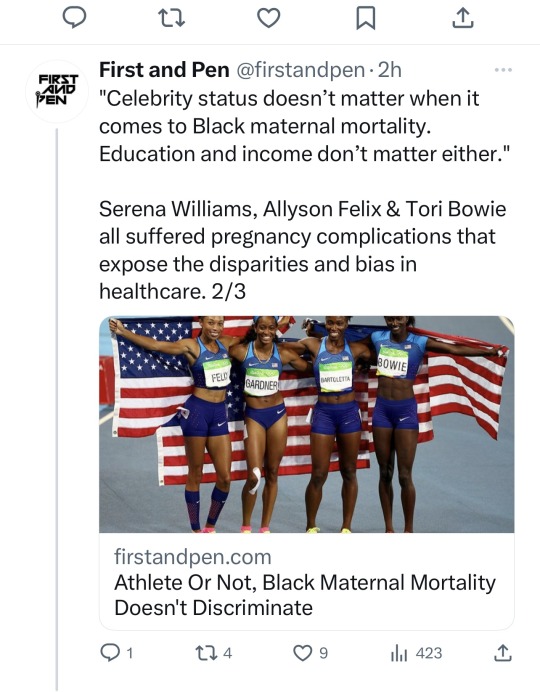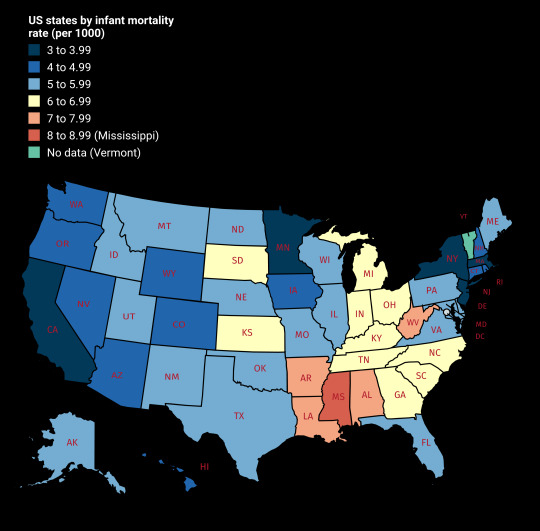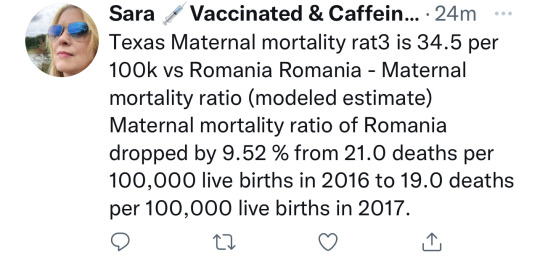#infant mortality
Link
“A Nigerian mom found out the hard way that jaundice is still a dangerous disease in Africa—but now she’s putting an end to the infant disease with her new tech startup, making solar-powered cribs.
After her traumatic experience with jaundice as a new mother, Virtue Oboro pivoted 180° in her professional life, in an effort to help prevent the terrifying situation from befalling other moms.
Oboro’s son, Tombra, was just 48 hours old when he had to be rushed to the NICU, suffering from a build-up of bilirubin, which causes yellow skin and can lead to permanent damage or even death.
The treatment is fairly simple... blue-light phototherapy.
Virtue’s hospital had no phototherapy devices, so Tombra had to receive a risky emergency blood transfusion. Her son would make a full recovery, but Virtue was changed by the experience.
“I felt like some of the things I experienced could have been avoided,” the visual designer told CNN. “I thought, is there something I could do to make the pain less for the babies and the mothers?”
What could a visual designer do? She designed the Crib A’Glow and named her new company Tiny Hearts.
The portable, deployable phototherapy unit is powered by the sun, and costs one-sixth the price of a normal phototherapy crib—and is manufactured in her homeland of Nigeria.
Virtue’s husband had some experience working with solar panels before, so he lent a hand to the visual designer, who was busy navigating the unknown waters of a new profession. She worked with a pediatrician through the design process to ensure all the details would benefit the tiny babies.
Two years ago, Crib A’Glow picked up a $50,000 grant from Johnson & Johnson through the Africa Innovation Challenge, and the Crib A’Glow can now be found in 500 hospitals across Nigeria and neighboring Ghana. Already it has been used on 300,000 babies.
Virtue, who has also become a 2022 awardee for The Africa Prize for Engineering Innovation, says a further 200,000 babies were saved from jaundice by deploying the cribs to rural areas—no hospitals or electricity needed.” -via Good News Network, 3/9/22
#nigeria#nicu#jaundice#babies#child mortality#ghana#solar panels#phototherapy#medical news#healthcare#healthcare access#infant mortality#cw infant death
910 notes
·
View notes
Text




Rest In Peace, Tori Bowie
While some vehemently deny that structural racism exists and that even individual doctors hold internal biases against Black women, maternal mortality rates do not lie.
👉🏿 https://firstandpen.com/torie-bowie-serena-williams-allyson-felix-pregnancy-black-maternal-health-mortality/

Even though 60% of all childbirth-related deaths in the US are preventable, the "[racial] disparities around maternal health are not improved by access to insurance, access to education," according to double board-certified neonatologist and pediatrician Dr. Terri Maior-Kincade.

"Having a higher socio-economic status for Black women is not protective," Major-Kincade told Insider. "These disparities are related to systemic issues, and they're not going to get better until we provide equitable care. So we have to improve the way we deliver care to Black women so that we can have the full joy of pregnancy."
👉🏿 https://www.insider.com/allyson-felix-near-death-pregnancy-issues-black-moms-face-2022-6
#politics#tori bowie#structural racism#medical racism#blacklivesmatter#black maternal health#infant mortality#maternal deaths#maternal death rate#reproductive rights#healtcare#reproductive justice#maternal mortality#maternal mortality rate
294 notes
·
View notes
Photo

US states by infant mortality rate.
166 notes
·
View notes
Text
Texas’ abortion restrictions – some of the strictest in the country – may be fueling a sudden spike in infant mortality as women are forced to carry nonviable pregnancies to term.
Some 2,200 infants died in Texas in 2022 – an increase of 227 deaths, or 11.5%, over the previous year, according to preliminary infant mortality data from the Texas Department of State Health Services that CNN obtained through a public records request. Infant deaths caused by severe genetic and birth defects rose by 21.6%. That spike reversed a nearly decade-long decline. Between 2014 and 2021, infant deaths had fallen by nearly 15%.
In 2021, Texas banned abortions beyond six weeks of pregnancy. When the Supreme Court overturned federal abortion rights the following summer, a trigger law in the state banned all abortions other than those intended to protect the life of the mother.
The increase in deaths could partly be explained by the fact that more babies are being born in Texas. One recent report found that in the final nine months of 2022, the state saw nearly 10,000 more births than expected prior to its abortion ban – an estimated 3% increase.
But multiple obstetrician-gynecologists who focus on high-risk pregnancies told CNN that Texas’ strict abortion laws likely contributed to the uptick in infant deaths.
“We all knew the infant mortality rate would go up, because many of these terminations were for pregnancies that don’t turn into healthy normal kids,” said Dr. Erika Werner, the chair of obstetrics and gynecology at Tufts Medical Center. “It’s exactly what we all were concerned about.”
110 notes
·
View notes
Text
Not to post a zionist-run paper, but
WHAT DO YOU EXPECT WHEN YOU BAN ABORTION AND FORCE PEOPLE TO GIVE BIRTH TO BABIES WHO WON'T FUCKING MAKE IT?!
35 notes
·
View notes
Video
Childbirth Is Deadlier for Black Families Even When They’re Rich, Expansive Study Finds
https://www.nytimes.com/interactive/2023/02/12/upshot/child-maternal-mortality-rich-poor.html
In the United States, the richest mothers and their newborns are the most likely to survive the year after childbirth — except when the family is Black, according to a groundbreaking new study of two million California births. The richest Black mothers and their babies are twice as likely to die as the richest white mothers and their babies.
Research has repeatedly shown that Black mothers and babies have the worst childbirth outcomes in the United States. But this study is novel because it’s the first of its size to show how the risks of childbirth vary by both race and parental income, and how Black families, regardless of their socioeconomic status, are disproportionately affected.
“This is a landmark paper, and what it makes really stark is how we are leaving one group of people way behind,” said Atheendar Venkataramani, a University of Pennsylvania economist who studies racial health disparities and was not involved in the research.
The study, published last month by the National Bureau of Economic Research, includes nearly all the infants born to first-time mothers from 2007 to 2016 in California, the state with the most annual births. For the first time, it combines income tax data with birth, death and hospitalization records and demographic data from the Census Bureau and the Social Security Administration, while protecting identities.
That approach also reveals that premature infants born to poor parents are more likely to die than those born into the richest families. Yet there is one group that doesn’t gain the same protection from being rich, the study finds: Black mothers and babies.
Are you a Black parent who recently gave birth? Tell us about it.
“It suggests that the well-documented Black-white gap in infant and maternal health that’s been discussed a lot in recent years is not just explained by differences in economic circumstances,” said Maya Rossin-Slater, an economist studying health policy at Stanford and an author of the study. “It suggests it’s much more structural.”
If anything, the study’s findings understate the dangers of childbirth in much of the United States, a variety of researchers said, because California’s maternal mortality rate has been declining over the last decade, as deaths have gone up in the rest of the country.
Rich Families Have More Premature Babies. But Those Babies Are Less Likely to Die.
Perhaps unexpectedly, babies born to the richest 20 percent of families are the least healthy, the study finds. They are more likely to be born premature and at a low birth weight, two key risk factors for medical complications early in life. This is because their mothers are more likely to be older and to have twins (which are more common with the use of fertility treatments), the researchers found.
But even with those early risk factors, these babies are the most likely to survive both their first month and first year of life.
A similar pattern emerged when it came to the health of the parents themselves: Rich and poor mothers were equally likely to have high-risk pregnancies, but the poor mothers were three times as likely to die — even within the same hospitals. Rich women’s pregnancies “are not only the riskiest, but also the most protected,” the paper’s authors wrote.
A pair of charts showing the relationship between a mother’s income and rates of premature births and infant mortality. The first chart shows that as a woman’s income rises, the likelihood of preterm birth rises. The second chart shows that as a woman’s income rises, rates of infant mortality fall.
This finding suggests that the American medical system has the ability to save many of the lives of babies with early health risks, but that those benefits can be out of reach for low-income families.
Resources outside the medical system also play a role. Separate research on children with leukemia, for example, has found that even when treated at the same hospital and using the same protocol, those from high-income families fared better than those from poorer families.
“It’s not just about the medical care that kids are receiving,” said Anna Aizer, a health economist at Brown University. “There are all sorts of other things that go into having healthy babies. If you’re a higher-income mom who can take time off work, who doesn’t have to worry about paying rent, it’s not surprising you’ll be able to manage any health complications better.”
Money Protects White Mothers and Babies. It Doesn’t Protect Black Ones.
The researchers found that maternal mortality rates were just as high among the highest-income Black women as among low-income white women. Infant mortality rates between the two groups were also similar.
Two charts showing the relationship between a mother’s income and rates of infant mortality by race. The first chart shows that as a Black mother’s income increases, the rate of infant mortality generally drops. The same is true in the second chart for white mothers, but at much lower rates than for Black women.
The richest Black women have infant mortality rates at about the same level as the poorest white women.
The babies born to the richest Black women (the top tenth of earners) tended to have more risk factors, including being born premature or underweight, than those born to the richest white mothers — and more than those born to the poorest white mothers. It’s evidence that the harm to Black mothers and their babies, regardless of socioeconomic status, begins before childbirth.
“As a Black infant, you’re starting off with worse health, even those born into these wealthy families,” said Sarah Miller, a health economist at the University of Michigan. She was an author of the study with Professor Rossin-Slater and Petra Persson of Stanford, Kate Kennedy-Moulton of Columbia, Laura Wherry of N.Y.U. and Gloria Aldana of the Census Bureau.
Black mothers and babies had worse outcomes than those who were Hispanic, Asian or white in all the health measures the researchers looked at: whether babies were born early or underweight; whether mothers had birth-related health problems like eclampsia or sepsis; and whether the babies and mothers died. There was not enough data to look at other populations, including Native Americans, but other research has shown that they face adverse outcomes nearing those of Black women and infants in childbirth.
Charts that show the relationship between a mother’s income by group. The groups are Hispanic mothers and Asian mothers. Generally, rates for Hispanic mothers and Asian mothers track more closely with those of white mothers than Black mothers.
Even before the new paper, research found that Black women with the most resources, as measured by education and class mobility, did not benefit during childbirth the way white women did. The new study demonstrates that disparities are not explained by income, age, marital status or country of birth. Rather, by showing that even rich Black mothers and babies have a disproportionately higher risk of death, the data suggests broader forces at play in the lives of Black mothers, Professor Rossin-Slater said.
“It’s not race, it’s racism,” said Tiffany L. Green, an economist focused on public health and obstetrics at the University of Wisconsin-Madison. “The data are quite clear that this isn’t about biology. This is about the environments where we live, where we work, where we play, where we sleep.”
There is clear evidence that Black patients experience racism in health care settings. In childbirth, mothers are treated differently and given different access to interventions. Black infants are more likely to survive if their doctors are Black. The experience of the tennis star Serena Williams — she had a pulmonary embolism after giving birth, yet said health care professionals did not address it at first — drew attention to how not even the most famous and wealthy Black women escape this pattern.
But this data shows how the effects of racism on childbirth start long before people arrive at the hospital, researchers across disciplines say, and continue after they leave. The stress of experiencing racism; air pollution in Black communities; and inequitable access to paid family leave, for example, have all been found to affect the health of mothers and babies.
“Even when it’s not about the direct disrespect that’s going on between the patient and the care provider, there are many ways systemic racism makes its way into the well-being of a pregnant or birthing person,” said Dr. Amanda P. Williams, the clinical innovation adviser at the California Maternal Quality Care Collaborative.
California Is a Best-Case Scenario. It Still Lags Behind Other Wealthy Parts of the World.
Many parts of the United States have much higher maternal mortality than California, and fewer policies to support families. California was the first state to offer paid family leave. It has one of the most generous public insurance programs for pregnant women. The state has invested in specific programs aimed at reducing maternal deaths and racial disparities in childbirth.
Yet even in this best-case American scenario, mothers and babies fare worse compared with another rich country the researchers examined: Sweden. At every income level, Swedish women have healthier babies. This held true for the highest-income Swedish women and those from disadvantaged populations, including low-income and immigrant mothers.
A pair of charts showing the relationship between birth outcomes in Sweden and California. The first chart shows that Swedish women have heavier babies at every income level. The second chart shows that Swedish women have lower rates of preterm birth than California women at every income level.
Swedish women have heavier babies at every income level ...
... and far lower instances of preterm birth.
In the United States, earning more regularly translates into superior access to the fastest, most expensive health care. But even with that advantage, the richest white Californians in this study still gave birth to less healthy babies than the richest Swedish women. Their newborns were more likely to be premature or underweight. The two groups had roughly equal maternal death rates.
“That finding really does strongly suggest that it’s something about the care model,” said Dr. Neel Shah, chief medical officer of Maven Clinic for women’s and family health and a visiting scientist at Harvard Medical School. “We have the technology, but the model of prenatal care in the United States hasn’t really gotten an update in the last century.”
A chart showing where the U.S. falls on the spectrum of maternal mortality among peer countries. The U.S. is last in a ranking that includes New Zealand, Norway, the Netherlands, Germany, Sweden, Switzerland, Australia, Britain, Canada and France, in that order.
Paper
Sweden, like most European countries, has universal health insurance with low out-of-pocket costs for the patient. Midwives deliver most babies in Sweden and provide most of the prenatal care, which has been linked to lower C-section rates and lower rates of preterm births and low birth weights. It has long paid leaves and subsidized child care.
Like California, Sweden has also started targeted efforts to reduce maternal deaths. When officials there recognized that African immigrants giving birth were dying more frequently, they began piloting a “culture doula” program, with doulas who were immigrants themselves helping pregnant women navigate the country’s health system.
Local maternal health programs could begin to help reduce racial disparities in the United States, too, as could a more diverse medical workforce, research suggests. Nonprofits and universities have experimented with ways to address racism and poverty, with programs like cash transfers for low-income pregnant women and initiatives to improve the environments of Black communities.
By the time a woman is pregnant, Professor Miller said, “it’s almost too late.”
“Health is going to depend on exposures throughout her life, health care she’s received, environmental factors,” she said. “A lot goes on prior to the pregnancy that affects the health of the mother and baby.”
About the data
The researchers collected birth certificate data for all babies born to first-time mothers in California from 2007 to 2016. The final sample included 1.96 million births. They collected hospitalization and death records for babies for one year from the California Department of Health Care Access and Information, as well as hospitalization records for mothers for nine months before the birth and a year after. They collected maternal death records for the same period from a Social Security Administration data set. They provided birth records to the Census Bureau, which assigned anonymous identification codes to access I.R.S. data and determine new parents’ incomes in the two years before the birth. (Infant mortality records were available only until 2012. Maternal mortality data covers a longer period than in government records, which generally include data for six weeks after a birth, and most likely capture some deaths unrelated to childbirth.)
In Sweden, the researchers collected similar health and mortality data from the National Board of Health and Welfare. The final sample included 463,865 births. Analogous maternal morbidity data was unavailable. They linked babies to their parents and collected parents’ demographic and financial data from Statistics Sweden. Sweden has a smaller gap between the highest and lowest earners than the United States.
#tiktok#article#new york times#Healthcare#Health Care#infant mortality#california#reproductive justice#reproductive freedom#reproductive rights#reproductive choice#reproductive health#health news#medical studies
106 notes
·
View notes
Text
Dickens does not tell us why Scrooge is so attracted to Tiny Tim. He fits so well into the stock Victorian figure of the Invalid Child, whose ability to soften the hard heart is taken as a given, that it may not have occurred to him anyone would need a reason.
The reason the Invalid Child worked so well on Dickens’s audience is, that every family had one, and it was probably dead. Infant mortality rates were appalling at all levels of society, even by the standards of history, as overcrowding preceded decent public hygiene measures by decades, air pollution was a significant problem for the first time, consumer protection laws were things of the future, and the germ theory of disease was only a glimmer on the horizon. Nutritious, well-balanced diets were beyond the reach of the poor, and even the rich got a little vitamin deficiency during the winter. Antibiotics would not be invented for a hundred years - even when I was a child, people still called them miracle drugs. It was desperately easy for minor illnesses and disorders to become disabling or fatal in these circumstances.
My own head canon for why this particular sickly child makes such an impression on Scrooge is, that he recognizes the malady. I think Tim is afflicted with some condition that weakens his limbs and makes him prone to infection, but which is treatable with good food, clean air, and gentle exercise; a vitamin deficiency, perhaps. I think Scrooge’s little sister Fan had it, and got better after a trip to the seaside involving a lot of time outside, sea bathing, good food, and plenty of rest. None of which, Scrooge realizes, are available to Tim on the salary his father brings in.
#dickens december#literature#non sims#infant mortality#Victorian Sick Child Syndrome#we joke about it because we can afford to
163 notes
·
View notes
Text

Frederick died on Apr 12th, 1872 Aged 1yr 3mos.
"God took our lamb"
Southampton MA 3/16/24
9 notes
·
View notes
Text
“Don’t forget this, your grandparents are survivors of their childhoods.”

52 notes
·
View notes
Text
15 notes
·
View notes
Text
Articles on Polish infant and maternal rates vs abortion restrictions:
24 notes
·
View notes
Text
Researchers from Western and Brown University have made groundbreaking progress towards identifying the root cause and potential therapy for preeclampsia.
The pregnancy complication affects up to eight per cent of pregnancies globally and is the leading cause of maternal and fetal mortality due to premature delivery, complications with the placenta and lack of oxygen.
The research, led by Drs. Kun Ping Lu and Xiao Zhen Zhou at Western, and Drs. Surendra Sharma and Sukanta Jash at Brown, has identified a toxic protein, cis P-tau, in the blood and placenta of preeclampsia patients.
According to the study published in Nature Communications, cis P-tau is a central circulating driver of preeclampsia – a “troublemaker” that plays a major role in causing the deadly complication...
“The root cause of preeclampsia has (so far) remained unknown, and without a known cause there has been no cure. Preterm delivery is the only life-saving measure,” said Lu, professor of biochemistry and oncology at Schulich School of Medicine & Dentistry...
“Our study identifies cis P-tau as a crucial culprit and biomarker for preeclampsia. It can be used for early diagnosis of the complication and is a crucial therapeutic target,” said Sharma...
Until now, cis P-tau was mainly associated with neurological disorders like Alzheimer’s disease, traumatic brain injuries (TBI) and stroke. This association was discovered by Lu and Zhou in 2015 as a result of their decades of research on the role of tau protein in cancer and Alzheimer’s.
An antibody developed by Zhou in 2012 to target only the toxic protein while leaving its healthy counterpart unscathed is currently undergoing clinical trials in human patients suffering from TBI and Alzheimer’s Disease. The antibody has shown promising results in animal models and human cell cultures in treating the brain conditions.
The researchers were curious whether the same antibody could work as a potential treatment for preeclampsia. Upon testing the antibody in mouse models they found astonishing results.
“In this study, we found the cis P-tau antibody efficiently depleted the toxic protein in the blood and placenta, and corrected all features associated with preeclampsia in mice. Clinical features of preeclampsia, like elevated blood pressure, excessive protein in urine and fetal growth restriction, among others, were eliminated and pregnancy was normal,” said Sharma.
Sharma and his team at Brown have been working on developing an assay for early detection of preeclampsia and therapies to treat the condition. He believes the findings of this study have brought them closer to their goal...
“The results have far-reaching implications. This could revolutionize how we understand and treat a range of conditions, from pregnancy-related issues to brain disorders,” said Lu.
-via India Education Diary, September 22, 2023
#preeclampsia#maternal mortality#infant mortality#medical news#medical research#alzheimers#biology#pregnancy complications#good news#hope
315 notes
·
View notes
Text






I’m willing to bet the Black woman was sitting there first and the other person intentionally sat next to her to get a rise out of her.
In case you can’t read the photo, the Black woman is wearing a t-shirt that reads, “Abortion. Any time. Any reason,” and the blonde, anti-mask Christofascist sitting next to her has a laptop with stickers that read, “Defund Planned Parenthood,” “Black Preborn lives matter,” “I am the post-Roe generation,” “pro-life” and “Pro-life Pro-woman.”
Also, no shade on Romania but for a country that allegedly cares about women and children, America (red states in particular) is doing a fuck ass job when it comes to the unforgivably high, completely preventable! mortality rate amongst mothers and infants, especially when they’re Black.
#politics#republicans#abortion#christofascism#bodily autonomy#reproductive rights#reproductive justice#scotus#healthcare#infant mortality#maternal death rate
423 notes
·
View notes
Photo

Change in infant mortality from 1950 to 2020.
206 notes
·
View notes
Text
You mean a country that makes it harder for women to access birth control, access maternal healthcare, has maternal care deserts, has no mandated maternal leave as an increase in infant mortality?
The infant mortality rate in the U.S. rose last year for the first time in 20 years, according to a new report from the Centers for Disease Control and Prevention (CDC), with significant increases observed in two of the top causes of death.
Between 2021 and 2022, infant deaths in the U.S. rose by 3 percent. or 5.6 fatalities per 1,000 live births. The mortality rate for newborns also increased by 3 percent, while the mortality rate for non-newborn infants rose by 4 percent. The CDC noted this goes against a nearly 20-year trend.
“The infant mortality rate for the United States rose 3% from 2021 to 2022, the first year-to-year increase in the rate since 2001 to 2002,” the agency’s report stated. “From 2002 to 2021, the infant mortality rate declined 22%.”
The mortality rate among infants born to American Indian and Alaska Native non-Hispanic and White non-Hispanic mothers rose significantly more than the overall change, the CDC noted in its report. The changes in mortality rates observed among infants born to Black; Native Hawaiian or Other Pacific Islander; Hispanic; and Asian mothers were not statistically significant.
Four states were observed as having seen significantly increased infant mortality rates — Georgia, Iowa, Missouri and Texas — while Nevada was the single state to see significant drops in mortality in 2022.
Across different age groups of mothers, the infant mortality rate was only observed to rise among women between the ages of 25 and 29 between 2021 and 2022. Mortality rates also rose for all preterm infants, those born before 37 weeks of gestation, as well as male infants.
Among the top 10 leading causes of infant death, two rose significantly last year: maternal complications of pregnancy and bacterial sepsis of newborns. The top cause of infant mortality in 2022 was congenital malformations.
The agency noted the dataset is provisional and has yet to undergo a more comprehensive review so the final numbers may be slightly different.
The U.S. has a higher infant mortality rate compared to other developed countries. According to data from the Organisation for Economic Co-operation and Development, America’s infant mortality rate is one the top 10 highest among its 38 member states, ranking higher than Canada, the U.K., Australia, South Korea and Japan.
Many countries have infant mortality rates that are drastically higher, with India and South Africa reporting more than 25 infant deaths for every 1,000 live births.
I couldn't get a the whole map to download but i think this still makes the point

#usa#infant mortality#the Centers for Disease Control and Prevention (CDC)#Georgia#Iowa#Missouri#Texas#Good news for mothers and newborns in Nevada
13 notes
·
View notes
Text
Guess Which Five States Care the Least About Babies...

[The numbers in each state represent the Confederate memorials including statues, roads, buildings, etc., in each state. / Source: The Southern Poverty Law Center]
Highest infant Mortality: #1 Mississippi; #2 Louisiana; #3 West Virginia; #4 Arkansas; #5 Alabama
Lowest Infant Birthweights: #1 Mississippi;#2 Louisiana; #3 Alabama; #4 Georgia; #5 South Carolina
Highest Birthrate for Teens: #1 Mississippi; #2 Arkansas; #3 Lousiana; #4 Oklahoma; #5 Alabama
Most Babies Born Pre-term: #1 Mississippi; #2 Alabama; #3 Louisiana; #4 West Virginia; #5 South Carolina
Highest Caesarian Birth Rates: #1 Mississippi; #2 Louisiana; #3 Florida; #4 Alabama; #5 Texas
#babies#abortion#prochoice#prolife#antichoice#war on women#womens health#womens rights#mississippi#infant mortality#alabama#louisiana#planned parenthood#contraception#texas#south carolina#theocracy#CDC
200 notes
·
View notes